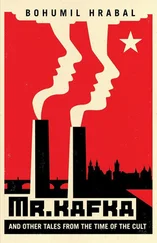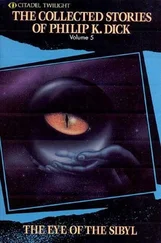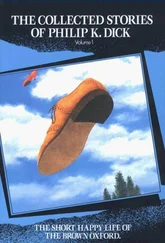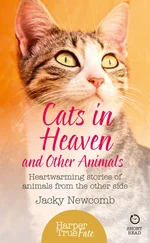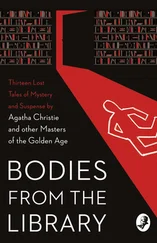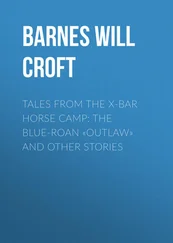TALES FROM THE
PERILOUS REALM
BY
J.R.R. Tolkien

HarperCollins Publishers 77-85 Fulham Palace Road, Hammersmith, London W6 8JB
Published by HarperCollins Publishers 2008
This collection first published in Great Britain by HarperCollins Publishers 1997
Farmer Giles of Ham first published 1949
Copyright © The J.R.R. Tolkien Copyright Trust 1949
The Adventures of Tom Bombadil first published 1961
Copyright © The J.R.R. Tolkien Copyright Trust 1962
Leaf By Niggle first published in Tree and Leaf 1964
Copyright © The Tolkien Trust 1964
Smith of Wootton Major first published 1967
Copyright © The Tolkien Trust 1967
Roverandom first published 1998
Copyright © The Tolkien Trust 1998
Introduction © Tom Shippey 2008
 ® and Tolkien® are registered trade marks of The J.R.R. Tolkien Estate Limited
® and Tolkien® are registered trade marks of The J.R.R. Tolkien Estate Limited
All rights reserved under International and Pan-American Copyright Conventions. By payment of the required fees, you have been granted the non-exclusive, non-transferable right to access and read the text of this e-book on-screen. No part of this text may be reproduced, transmitted, down-loaded, decompiled, reverse engineered, or stored in or introduced into any information storage and retrieval system, in any form or by any means, whether electronic or mechanical, now known or hereinafter invented, without the express written permission of HarperCollins e-books.
Source ISBN: 9780007280599
Ebook Edition © SEPTEMBER 2009:9780007348169
Version: 2014-12-08
Title Page
Copyright
INTRODUCTION
ROVERANDOM
1
2
3
4
5
FARMER GILES OF HAM
FOREWORD
FARMER GILES OF HAM
THE ADVENTURES OF TOM BOMBADIL
PREFACE
1 THE ADVENTURES OF TOM BOMBADIL
2 BOMBADIL GOES BOATING
3 ERRANTRY
4 PRINCESS MEE
5 THE MAN IN THE MOON STAYED UP TOO LATE
6 THE MAN IN THE MOON CAME DOWN TOO SOON
7 THE STONE TROLL
8 PERRY-THE-WINKLE
9 THE MEWLIPS
10 OLIPHAUNT
11 FASTITOCALON
12 CAT
13 SHADOW-BRIDE
14 THE HOARD
15 THE SEA-BELL
16 THE LAST SHIP
SMITH OF WOOTTON MAJOR
SMITH OF WOOTTON MAJOR
LEAF BY NIGGLE
LEAF BY NIGGLE
APPENDIX
ON FAIRY-STORIES
FAIRY-STORY
ORIGINS
CHILDREN
FANTASY
RECOVERY, ESCAPE, CONSOLATION
EPILOGUE
NOTES
Keep Reading
About the Author
Works by J.R.R. Tolkien
About the Publisher
We do not know when Tolkien began to turn his thoughts to the Perilous Realm of Faërie. In his essay “On Fairystories”, to be found at the end of this book, he admits that he took no particular interest in tales of that kind as a child: they were just one of many interests. A “real taste” for them, he says, “was wakened by philology on the threshold of manhood, and quickened to full life by war”. This seems to be strictly accurate. The first of his works to take an interest in fairies, that we know of, is a poem called “Wood-sunshine”, written in 1910, when Tolkien was eighteen and still at King Edward’s School in Birmingham. By the end of 1915, the year in which he took his Oxford degree and immediately joined the army to fight in the Great War, he had written several more, some of them containing major elements of what would be his developed Faërie mythology. By the end of 1917, most of which he spent in military hospital or waiting to be passed fit for active service once more, he had written the first draft of tales which would sixty years later be published in The Silmarillion , and much of Middle-earth, as also of Elvenhome beyond it, had taken shape in his mind.
What happened then is a long story, about which we now know a great deal more than we did, but once again it was summed up concisely and suggestively by Tolkien himself, in the story “Leaf by Niggle”. It is generally accepted that this has a strong element of self-portrait about it, with Tolkien the writer—a confirmed “niggler”, as he said himself—transposed as Niggle the painter. Niggle, the story tells us, was busy on all kinds of pictures, but one in particular started to grow on him. It began as just a single leaf, but then it became a tree, and the tree grew to be a Tree, and behind it a whole country started to open out, with “glimpses of a forest marching over the land, and of mountains tipped with snow”. Niggle, Tolkien wrote, “lost interest in his other pictures; or else he took them and tacked them on to the edges of his great picture”.
Once again this is an accurate account of what Tolkien can be seen doing in the 1920s, 1930s, and 1940s. During those thirty years he kept working at variants of “Silmarillion” stories, writing occasional poems, often anonymously, and making up other stories, not always written down and sometimes told initially only to his children. The Hobbit started life as one of these, set in Middleearth, but to begin with connected only tangentially with the Elvish history of the Silmarils: it was, to use the modern term, a spin-off. The Lord of the Rings was a further spin-off, this time from The Hobbit , and initially motivated by Tolkien’s publisher’s strong desire for a Hobbit -sequel. But what Tolkien started to do, just like Niggle, was to take things he had written before and start “tacking them on to the edges”. Tom Bombadil, who had begun as the name for a child’s toy, got into print in 1934 as the hero of a poem, and then became perhaps the most mysterious figure in the world of The Lord of the Rings. That work also drew in other poems, some of them comic, like Sam Gamgee’s “Oliphaunt” rhyme, first published in 1927, others grave and sad, like the version Strider gives on Weathertop of the tale of Beren and Lúthien, again going back to a poem published in 1925, and based on a story written even earlier.
Quite what was the “leaf” of Tolkien’s original inspiration, and what he meant by “the Tree”, we cannot be sure, though the “forest marching over the land” does sound very like the Ents. But the little allegory makes one further point which corroborates what Tolkien said elsewhere, and that is that “fairy-stories”, whoever tells them, are not about fairies so much as about Faërie, the Perilous Realm itself. Tolkien indeed asserted there are not many stories actually about fairies, or even about elves, and most of them—he was too modest to add, unless they were written by Tolkien himself—were not very interesting. Most good fairy-stories are about “the aventures of men in the Perilous Realm or upon its shadowy marches”, a very exact description once again of Tolkien’s own tales of Beren on the marches or borders of Doriath, Túrin skirmishing around Nargothrond, or Tuor escaping from the Fall of Gondolin. Tolkien remained strongly ambivalent about the very notion of “fairy”. He disliked the word, as a borrowing from French—the English word is “elf”—and he also disliked the whole Victorian cult of fairies as little, pretty, ineffective creatures, prone to being co-opted into the service of moral tales for children, and often irretrievably phony. Much of his essay “On Fairy—Stories”, indeed (published in 1945 in a memorial volume for Charles Williams, and there expanded from a lecture given in 1939 in honour of Andrew Lang the fairy-tale collector) is avowedly corrective, both of scholarly terminology and of popular taste. Tolkien thought he knew better, was in touch with older, deeper, and more powerful conceptions than the Victorians knew, even those as learned as Andrew Lang.
Читать дальше


 ® and Tolkien® are registered trade marks of The J.R.R. Tolkien Estate Limited
® and Tolkien® are registered trade marks of The J.R.R. Tolkien Estate Limited